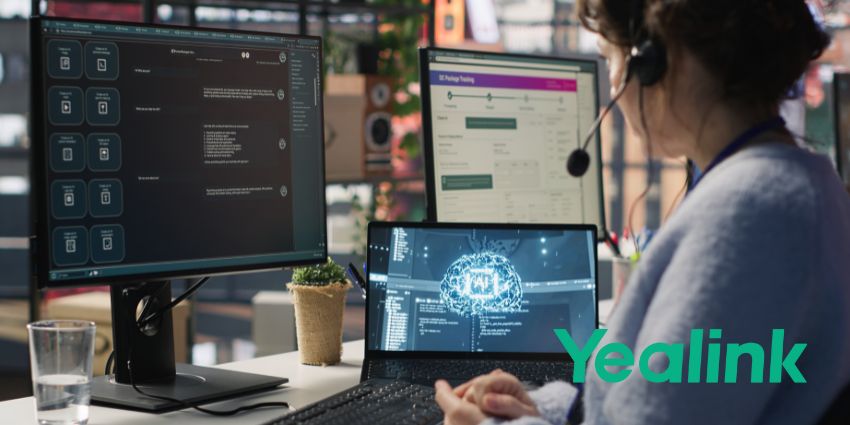As enterprise organizations accelerate their adoption of generative AI tools – whether for meeting transcription, workflow automation, or virtual collaboration – one foundational component often goes overlooked: the quality of the voice input.
Speech-driven AI requires more than just a microphone. It demands audio infrastructure that is purpose-built to distinguish, isolate, and deliver human voice with high fidelity in real-world environments. That’s where Yealink’s AI-powered audio solutions are playing an increasingly strategic role.
“Gen AI is transforming how we work, write, and meet,” said Alex Lin, Product Marketing Manager, Yealink.
“But to get the most out of tools like Microsoft Copilot, your voice needs to come through – clearly, reliably, and without distraction.”
Enabling AI Productivity Through Smarter Audio Infrastructure
Tools like Microsoft Copilot, Zoom AI Companion, and Otter.ai rely heavily on accurate voice capture to generate value – whether through live transcription, smart summaries, or context-aware prompts.
However, in shared spaces or hybrid work settings, traditional audio peripherals struggle to deliver reliable inputs.
Yealink’s latest generation of headsets and speakerphones aims to address this gap through a combination of:
- Multi-microphone arrays for spatial voice detection.
- AI-based noise cancellation trained on varied acoustic environments.
- Super wideband audio that retains vocal clarity even at low volumes or mid-sentence pauses.
These technologies improve the consistency and integrity of voice input, resulting in up to 97 percent transcription accuracy in common enterprise use cases. For IT leaders deploying AI tools at scale, this represents a significant boost in usability and ROI.
Key Technical Capabilities
Microphone Technology
With a 6-microphone array, Yealink’s Acoustic Shield 3.0, and Super Wideband Audio, the technology can segment and prioritize the headset and speakerphone’s voice while suppressing ambient noise. This helps ensure that even in open-plan offices or remote settings, speech is intelligible without post-processing.
AI Noise Cancellation
Unlike fixed filters, Yealink’s noise suppression engine is trained to recognize and differentiate human speech from background patterns such as keyboard clicks, HVAC hum, or colleague conversations. This ensures reliable performance across diverse environments.
Designed for Extended Use and Cross-Platform Compatibility
User comfort and system interoperability are critical in modern IT deployments. Yealink’s devices feature lightweight, ergonomic form factors suited for extended daily use, and are natively compatible with over 100 unified communications platforms, including Microsoft Teams and Zoom.
Portfolio Overview: Scalable Solutions for Varied Workstyles
Yealink’s AI-ready audio lineup supports diverse deployment models across the enterprise:
ies (USB Wired Headsets): Reliable, plug-and-play connectivity for desk-based roles.
BH7X Series (Bluetooth Headsets): Mobile-first design with hybrid ANC for field workers and remote staff.
WH6X Series (DECT Wireless Headsets): Long-range, low-latency solutions for high-density office environments.
SP9X Series (USB Speakerphones): Compact speakerphones for meeting rooms and hybrid collaboration.
Each product is engineered to support AI-enhanced workflows while integrating into existing IT infrastructure.
Scaling AI Starts with Smarter Audio
As voice becomes a primary interface for enterprise-grade AI applications, the importance of audio quality and reliability will only grow.
For IT leaders evaluating how to scale AI productivity tools across their workforce, the underlying audio ecosystem is a critical yet often underestimated component.
By investing in purpose-built, AI-optimized audio endpoints like Yealink’s, organizations can ensure that the full potential of voice-driven AI is realized across teams, spaces, and scenarios.







